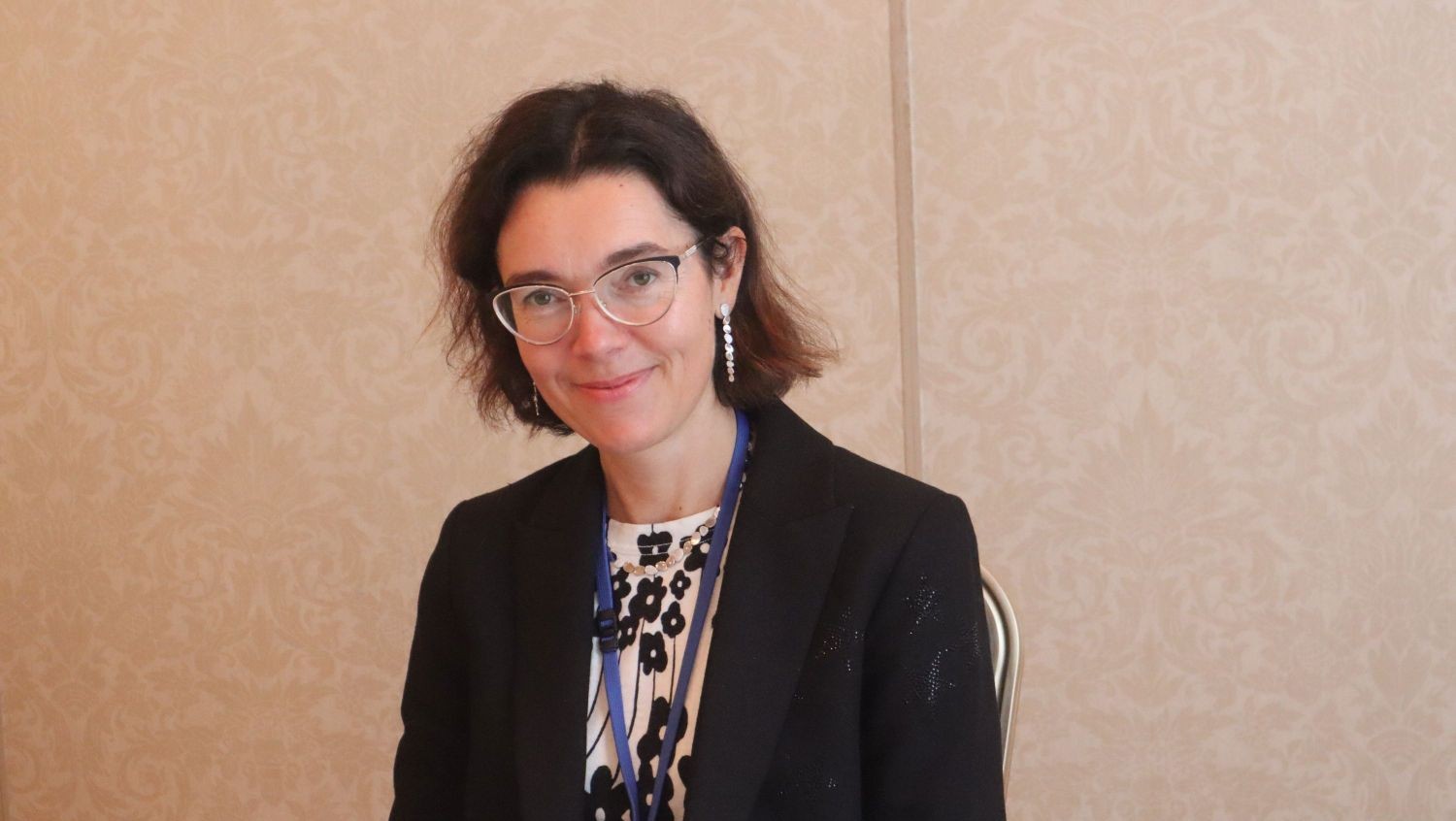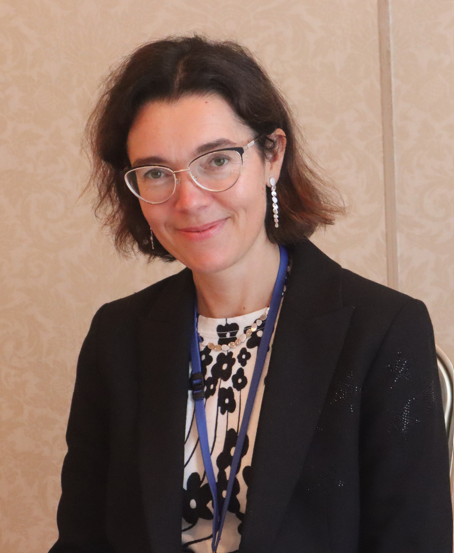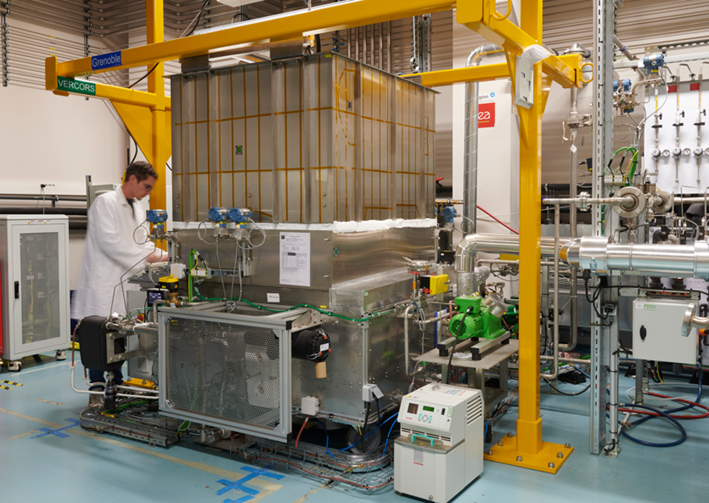-
About
-
Outcomes
-
Conference
-
Events

As Deputy Director for Hydrogen Technologies at the French Alternative Energies and Atomic Energy Commission (CEA), Dr. Julie Mougin has a confession to make: The study of hydrogen, that most abundant of all elements, was not her first love.
“I cannot say that hydrogen was a vocation,” Mougin says with a smile. “I was interested from the very beginning in materials science, and hydrogen technologies implies a lot of materials science at various scale, from nanoscale to macroscale.”
Moreover, while doing industrial research on materials related to the automotive market, she had the opportunity to work for four years on a joint research project with Kobe Steel in Japan. This, she says, gave her a taste for working in an international, collaborative environment.
Thus, when the opportunity came up in 2005 to work at CEA on European projects related to hydrogen, she took it. The laboratory that she has directed since 2010 focuses on hydrogen technologies along the whole value chain (production, storage and fuel cells).

As Mougin was making her personal transition into the field of hydrogen, the CEA has continued with its own international collaborative efforts. In the renewable energy field in particular, the CEA has been a member of the International Energy Agency’s (IEA) Hydrogen Technology Collaboration Program (TCP). Established in 1977, the TCP’s mission, says Mougin, is to accelerate the development and deployment of hydrogen technologies in a safe, sustainable and cost-effective way across various sectors.
Currently, the program is chaired by Mougin’s CEA colleague Paul Lucchese, and Mougin herself serves as the French representative on the TCP’s executive committee. The program involves 26 countries that are collaborating on advancing the technology for production, storage and supply, as well as addressing such matters as safety, regulatory and economic concerns.
More recently, the CEA has been one of the institutions participating in the RD20 initiative. Mougin points out that both the Hydrogen TCP and RD20 initiatives share the common goal of energy transition.
“The energy transition requires rapid development of new technologies — from renewable energy generation to energy storage (including hydrogen technologies and batteries), carbon capture and grid integration.”
The synergies between these two initiatives in this field, she adds, suggest the benefits of such entities working together.
“We are both, for instance, performing techno-economic and life-cycle assessments. We can discuss the methodologies that we are using and the results. It could be valuable for both initiatives and for the global community, too,” she says.
Efforts such as these, Mougin argues, by their nature demand a multinational approach. She says: “I personally think that no single country can do it alone. We need varied expertise, resources and collaboration to share best practices, results and lessons learned to be more efficient. I really believe that these international collaborations like RD20 offer a good opportunity to speed up, or contribute to speeding up, energy transition.”
In fact, the potential for collaboration between the Hydrogen TCP and RD20 initiatives was the topic of Mougin’s presentation to the Leaders Session at this year’s RD20 Conference. Backgrounded by a description of the Hydrogen TCP initiative, her intent was to focus on areas where the two initiatives could work together, such as on techno-economic and life-cycle assessments, testing protocols, and the upscaling of hydrogen technologies. Her hope, she says, was to stimulate interest among her listeners in collaborations between RD20 and Hydrogen TCP.


The RD20 initiative pursues other activities aside from its annual conference that also encourage international collaboration, Mougin notes. One of these projects not only crosses national borders, she points out, but also the boundaries between fields of expertise. This is the annual Summer School program. Launched in 2023, of particular appeal to Mougin is the fact that, as with the RD20 Conference itself, the participating students and experts come from a variety of backgrounds.
“We have people who come from solar, we have people from batteries and we have people from hydrogen.”
“As you know, I’m one of the people from the hydrogen field. Most of the year, I meet people only from the hydrogen field. The solar guys, they meet people from the solar field. The opportunities for all of us to meet are very infrequent,” she says.
Reflecting on her own field, she says: “Hydrogen technologies, I believe, are important. But I don’t think they are the ‘silver bullet.’ There is no single solution. You need to have a combination of solutions to contribute to the energy transition.” Having the chance to hear people who study or work in other fields discuss their research, she argues, stimulates cross-fertilization and encourages new ideas.
Aside from the Summer Schools, Mougin highlighted the taskforces that have been put together under the aegis of RD20, as well as workshops. In the case of the former, the taskforces working on such topics as photovoltaics and hydrogen life cycle and sustainability analysis, in her view, offer practical opportunities to pursue collaboration. As to the workshops, her hope is that they will continue to provide venues for representatives from other initiatives similar to RD20 to present their own efforts and discuss possibilities for international collaboration. RD20 is also present at the annual U.N. Conference of the Parties (COP) climate change events in the Japan pavilion, where it organizes seminars or roundtables, which is a very efficient opportunity to disseminate RD20 activities to a broad audience.
In Mougin’s view, the challenges that lay ahead for initiatives such as RD20 are not in collaboration. While the parties involved may have different goals specific to their own situations, in general they are all pushing toward the target of developing technologies in an efficient way to achieve the transition to clean energy and they are all open to working together.
Rather, Mougin says, one of the keys will be to strengthen links with policymakers. Representatives from research institutions and their related industries already meet frequently to discuss issues of mutual interest and in general their goals are aligned, she says. But there is much room for improvement when it comes to liaising with policymakers, whether at the international, national or local level.
From a more general perspective, Mougin adds, the practical frameworks for collaboration among researchers and institutions need to be more specifically defined. Funding, in particular, needs to be set aside to pursue specific goals, she argues.
“If you want to have experts dedicating some time — and in some cases not just a few meetings, but considerable time for work — you need some money,” she says. “The people here (at the conference) are interested in being here. They are willing to share some knowledge and so forth. However, when it comes to deciding whether to work on a project that is funded and one that isn’t,” she adds, her voice trailing off.
In short, “The main challenge is to have a framework (in place) and to have some money so we can dedicate some good time to work together,” Mougin says. Collaborations such as those suggested by the RD20 and IEA Hydrogen TCP initiatives, she noted, are crucial, and those involved have to provide the practical conditions to make them happen.